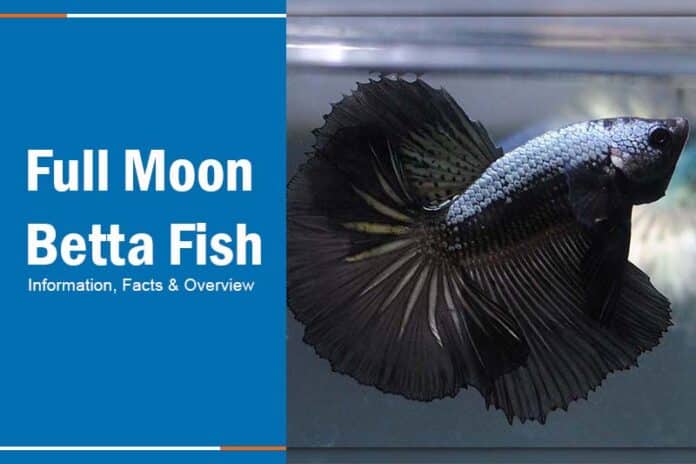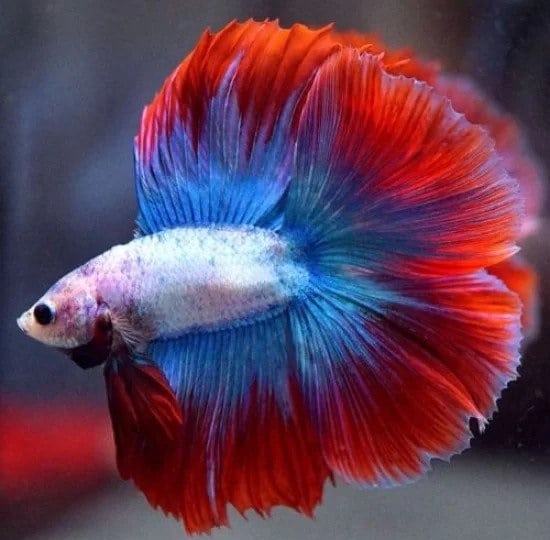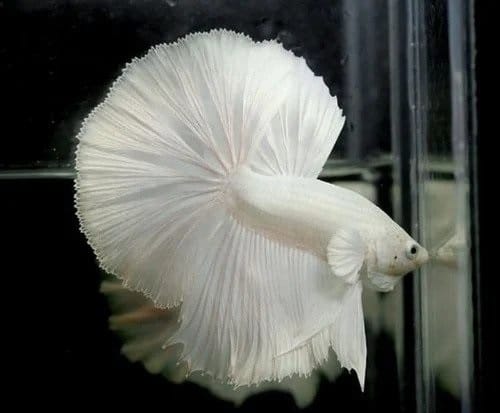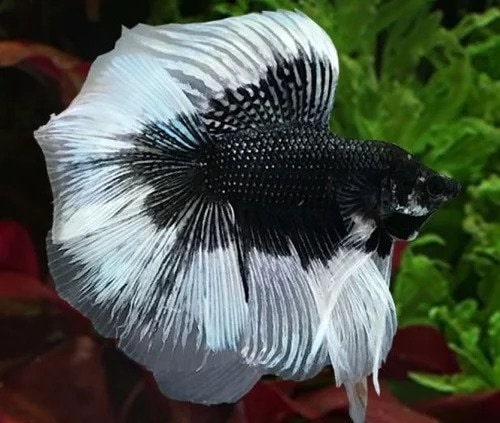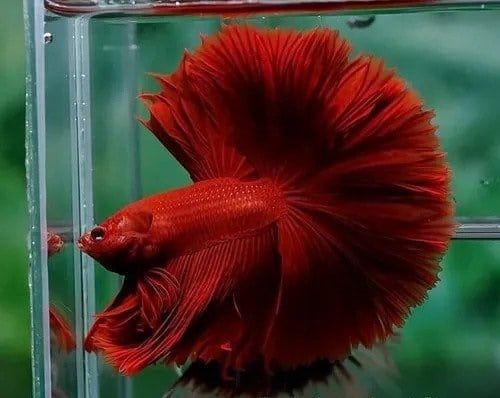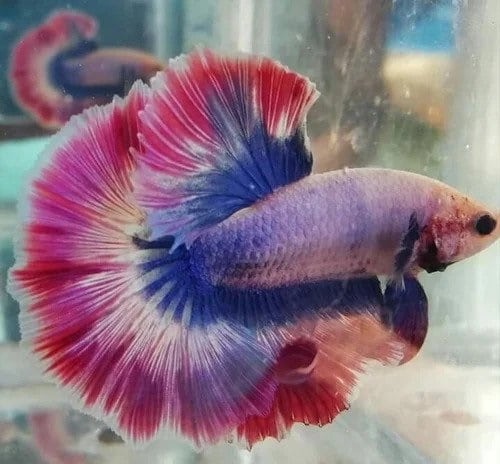You may be familiar with Half moon betta fish, which are among the most popular types of betta fish. But have you ever seen or heard of Full moon betta fish? They are also stunning and beautiful fish that can enhance your aquarium. How do they differ from Half moon betta fish? And how can you make your Full moon betta fish live longer?
In this article, National Park Aquarium will answer for you fact about Betta Full moon . Read on to learn more about these fascinating Betta fish.
Quick Fact of Full Moon Betta
The Full-Moon Betta closely resembles the Halfmoon Betta. While the Full-Moon variety boasts a double tail that spans 180 degrees, the Halfmoon features a single tail with the same span. The term “Full-Moon” is fitting, as its double tail can be likened to two half-moons combined, forming a full moon.
| Aspect | Information |
| Common Names | Full Moon Betta |
| Scientific Name | Betta splendens |
| Adult Size | Approximately 2.5 inches |
| Lifespan | 2 to 4 years |
| Family | Osphronemidae |
| Origin | Southeast Asia |
| Social | Solitary |
| Minimum Tank Size | 5 gallons |
| Diet | Carnivorous |
| Prey | Insects, larvae, small fish |
| Group Behavior | Aggressive towards own kind |
| Habitat | Slow-moving waters, rice paddies |
| Color | Various, iridescent colors |
| Skin Type | Scales |
| Care | Requires proper filtration, heating, and water quality |
| Breeding | Bubble nest builder, males care for eggs |
| pH | 6.5 – 7.5 |
| Water Hardness | Soft to moderately hard |
| Temperature | 78°F – 80°F (25.5°C – 26.5°C) |
| Favorite Food | High-quality betta pellets, live/frozen insects |
Types Colors Of Full Moon Betta Fish
The Full Moon Betta is renowned for its moon-like tail and a spectrum of captivating colors and patterns:
Solid Colors:
- Blue: Ranges from royal to turquoise.
- Red: From bright cherry to deep crimson.
- Yellow: A unique golden tint.
- White: Also known as ‘Platinum’.
Patterns:
- Marble: Irregular color mix.
- Butterfly: Two-tone, distinct on body and fin edges.
- Koi: Orange, black, and white mix resembling Koi fish.
Iridescent: Bettas like Copper and Gold shimmer, reflecting a metallic shine.
Wild Types: Colors resembling their wild ancestors, mainly in shades of green and brown. Proper care can enhance their vibrancy, showcasing the Full Moon Betta’s true beauty.
Behavior & Temperament
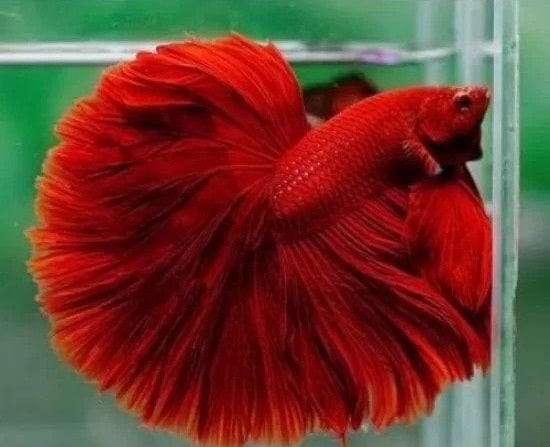
Full Moon Bettas are a paradox of beauty and boldness. Here’s a snapshot of their behavior:
- Territorial Instincts: Especially among males, they can be fiercely protective of their domains.
- Curiosity: Beyond their assertiveness, they’re explorative, keen to investigate their surroundings and often engage with their owners.
- Paternal Care: Males often create bubble nests, a sign of readiness for breeding.
- Sensitivity: They thrive in stable conditions, reacting to changes in their environment.
- Unique Personalities: Each Betta carries its individual character, offering aquarists both challenges and joys in caretaking.
Full Moon Betta Fish Price
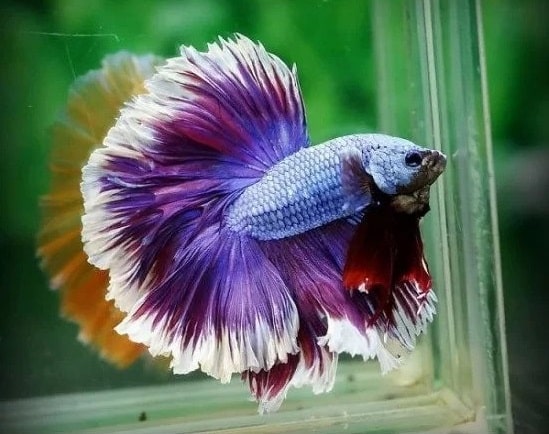
Standard Varieties: Standard Full Moon Betta varieties, featuring common colors and patterns, typically fall within the price range of $10 to $30. These vibrant and beautiful fish showcase the essence of the breed without breaking the bank.
Specialty Breeds: For those seeking the extraordinary, specialty Full Moon Bettas with rare hues, distinctive patterns, or exceptional fins are a captivating choice. However, this uniqueness comes at a price. These remarkable specimens can range from $50 to $100 or even higher. The cost increase is especially notable for bettas sourced from renowned breeders or those that have secured top honors in competitions.
Difference Between Full Moon and Half Moon Betta Fish
Full-Moon bettas are distinguished by their double tail that spans 180 degrees, while Halfmoon bettas have a single tail that also spans 180 degrees. The term “Full-Moon” is fitting as it represents two halves or two half moons, thus forming a full moon. If the tail extends beyond 210 degrees, it’s still considered a Full-Moon betta.
Source: AQUA FISH EXPERT
Conclusion
Owning a Full Moon Betta is a commitment. Their specific care requirements emphasize the need for adequate preparation and knowledge. When cared for properly, these fish offer a captivating experience, enriching the aquarium journey for both beginners and seasoned enthusiasts.

